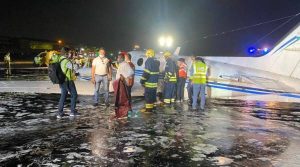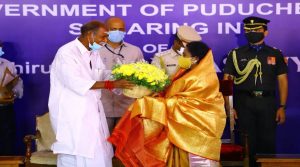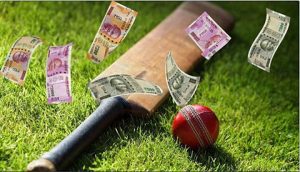Today Current Affairs: 8th May 2021 for UPSC IAS exams, State PSC exams, SSC CGL, State SSC, RRB, Railways, Banking Exam & IBPS, etc
Table of Contents
Database Of Companies And Auditors: NFRA:

National Financial Reporting Authority (NFRA) has prepared a provisional database of companies and auditors.
- The National Financial Reporting Authority is a regulatory body set up under Section 132 of the Companies Act to oversee compliance with Accounting and Auditing Standards by companies that can be described as Public Interest Entities (PIEs).
- This group includes all listed companies and large unlisted companies.
- To discharge this mandate, NFRA is in the process of creating a verified and accurate database of companies and auditors that come under the regulatory ambit of NFRA.
- The establishment of this database involves critical steps like identification and verification of the primary data source and reconciliation of data (such as Company Identification Number (CIN) which is dynamic) from different sources.
- In this regard the NFRA has been engaging with the Corporate Data Management (CDM) division of the Ministry of Corporate Affairs (MCA) and three recognized stock exchanges in India.
- A provisional database of companies and their auditors as of 31st March 2019 has been compiled by the NFRA which has been published on the website of the NFRA.
- This provisional data will be updated/revised going forward based on the collection of further data and information.
- A similar exercise for compilation of the database as of 31st March 2020 will be undertaken shortly.
Foam Path:

A medical flight made an emergency belly landing at the Chhatrapati Shivaji Maharaj International Airport in Mumbai after a wheel of the aircraft separated from its body. Mumbai airport officials sprayed foam on the runway to prevent fire as the Beechcraft VT-JIL aircraft made a belly landing.
- A foam path is an aviation safety practice of spreading a layer of fire suppression foam on an airport runway prior to an emergency landing.
- Following a crash-landing, liquids leaking from the aircraft, which are not yet burning, start evaporating, thereby resulting in forming an air-vapor mixture that is flammable or even highly explosive.
- In such cases, extinguishing foam is used preventively and the liquid is covered with a foam carpet as a vapor barrier.
- Airport fire brigades create a foam carpet in order to secure an emergency landing if the landing gear of an aircraft is not extended or is unstable.
- This is done in order to suppress the sparking and burning of any aircraft metals due to friction with the runway surface.
- The concerns surrounding the use of foam paths
- Although originally it was thought that foam paths would prevent fires, the practice is now discouraged.
- The International Civil Aviation Organization does not recommend foaming the runway in its Airport Services Manual, stating that the effectiveness of runway foaming is not fully substantiated by the real evidence of operational incident studies.
N. Rangasamy: Puducherry CM:

Prime Minister Narendra Modi has congratulated N. Rangasamy on taking oath as Puducherry CM.
- Puducherry is a Union Territory of India rather than a state, which implies that governance and administration fall directly under federal authority.
- However, Puducherry is one of the three union territories in India (the other being the National Capital Territory of Delhi and Jammu and Kashmir) that is entitled to a special constitutional amendment to have an elected legislative assembly and a cabinet of ministers, thereby conveying partial statehood.
- The Pondicherry Representative Assembly was converted into the Legislative Assembly of Pondicherry on 1 July 1963 as per Section 54(3) of The Union Territories Act, 1963.
- The elections for the Puducherry Vidhan Sabha are held since 1964.
Regulations Review Authority 2.0: RBI:

The Reserve Bank Of India (RBI) has constituted an Advisory Group to assist the second Regulations Review Authority (RRA 2.0).
- The RBI has set up the RRA 2.0, initially for a period of one year from 1st May 2021, with a view to streamline regulations and reduce the compliance burden of regulated entities.
- In 1999, the RBI had set up a Regulations Review Authority (RRA) for reviewing the regulations, circulars, reporting systems, based on the feedback from the public, banks, and financial institutions.
RRA 2.0:
- It will focus on streamlining regulatory instructions, reducing the compliance burden of the regulated entities by simplifying procedures and reducing reporting requirements, wherever possible.
- It will also obtain feedback from regulated entities.
- Regulated entities include commercial banks, urban co-operative banks, Non-Banking Financial Companies.
Unique Disability Identification Portal:

The Ministry of Social Justice & Empowerment has issued a notification making it mandatory for all States/UTs to grant certificates of disability through online mode only using UDID (Unique Disability ID) portal.
Unique Disability Identification (UDID) Portal:
- The project is being implemented with the view of creating a National Database for persons with disabilities (PwDs), and issuing a Unique Disability Identity Card to each PwDs.
- The project will not only encourage transparency, efficiency, and ease of delivering the government benefits to the person with disabilities but also ensure uniformity.
- The project will also help in streamlining the tracking of the physical and financial progress of beneficiaries at all levels of the hierarchy of implementation – from village level, block level, District level, State level, and National level.
Right of Persons with Disabilities Act 2016:
- Right of Persons with Disabilities Act 2016 replaces the Persons with Disabilities (Equal Opportunities, Protection of Rights and Full Participation) Act, 1995.
- Disability has been defined based on an evolving and dynamic concept.
- It increases the quantum of reservation for people suffering from disabilities from 3% to 4% in government jobs and from 3% to 5% in higher education institutes.
- This Act brings our law in line with the United National Convention on the Rights of Persons with Disabilities (UNCRPD), to which India is a signatory.
India’s Sovereign Rating:

According to the S&P Global Ratings, India’s sovereign rating will remain unchanged at the current level of BBB- for the next two years despite the potential adverse impact of a surging pandemic on its economy.
- S&P is one of the largest credit rating agencies, assigning letter grades to companies and countries and the debt they issue on a scale of AAA to D, indicating their degree of investment risk.
Sovereign Credit Rating:
- A sovereign credit rating is an independent assessment of the creditworthiness of a country or sovereign entity.
- It can give investors insights into the level of risk associated with investing in the debt of a particular country, including any political risk.
- In addition to issuing bonds in external debt markets, another common motivation for countries to obtain a sovereign credit rating is to attract foreign direct investment (FDI).
- At the request of the country, a credit rating agency will evaluate its economic and political environment to assign it a rating.
- S&P gives a BBB- or higher rating to countries it considers investment grade, and grades of BB+ or lower are deemed to be speculative or “junk” grade.
- Moody’s considers a Baa3 or higher rating to be of investment grade, and a rating of Ba1 and below is speculative.
Sovereign Credit Ratings and India: - The Economic Survey 2020-21 has called for sovereign credit ratings methodology to be made more transparent, less subjective and better attuned to reflect an economy’s fundamentals.
- Within its sovereign credit ratings cohort – countries rated between A+/A1 and BBB-/Baa3 – India is a clear outlier on several parameters i.e. a sovereign whose rating is significantly lower than mandated by the effect on the sovereign rating of the parameter.
- These include GDP growth rate, inflation, general government debt (as % of GDP), cyclically adjusted primary balance (as % of potential GDP), current account balance (as % of GDP), political stability, rule of law, control of corruption, investor protection, ease of doing business, short-term external debt (as % of reserves), reserve adequacy ratio and sovereign default history.
- The outlier status remains true not only now but also during the last two decades.
- The Survey observes that India’s willingness to pay is unquestionably demonstrated through its zero sovereign default history.
- India’s ability to pay can be gauged not only by the extremely low foreign currency-denominated debt of the sovereign but also by the comfortable size of its foreign exchange reserves that can pay for the short term debt of the private sector as well as the entire stock of India’s sovereign and non-sovereign external debt.
Credit Rating:
- A credit rating is a quantified assessment of the creditworthiness of a borrower in general terms or with respect to a particular debt or financial obligation.
- A credit rating can be assigned to any entity that seeks to borrow money—an individual, corporation, state or provincial authority, or sovereign government.
- A rating agency is a company that assesses the financial strength of companies and government entities, especially their ability to meet principal and interest payments on their debts.
- Fitch Ratings, Moody’s Investors Service, and Standard & Poor’s (S&P) are the big three international credit rating agencies controlling approximately 95% of global rating business.
Global Methane Assessment: Benefits And Costs Of Mitigating Methane Emissions:

A report, titled Global Methane Assessment: Benefits and Costs of Mitigating Methane Emissions suggested that the world needs to dramatically cut methane emissions to avoid the worst of climate change.
- The report was released by the Climate and Clean Air Coalition and the United Nations Environment Programme (UNEP).
Current Situation:
- Human-caused methane emissions are increasing faster currently than at any other time since record-keeping began in the 1980s.
- Carbon dioxide levels have dropped during the Covid-19 pandemic. However, methane in the atmosphere reached record levels last year.
- This is a cause of concern as it was responsible for about 30%of warming since pre-industrial times.
Reducing Methane Emissions from Major Sources:
Fossil Fuel:
- Oil and gas extraction, processing and distribution accounted for 23% of methane emissions in the fossil fuel sector. Coal mining accounted for 12% of emissions.
- Fossil fuel industry had the greatest potential for low-cost methane cuts, up to 80% of measures in the oil and gas industry could be implemented at negative or low cost.
- About 60% of methane cuts in this sector could make money as reducing leaks would make more gas available for sale.
Waste:
- Landfills and wastewater made up about 20% of emissions in the waste sector.
- The waste sector could cut its methane emissions by improving the disposal of sewage around the world.
Agriculture:
- In the agricultural sector, livestock emissions from manure and enteric fermentation constituted for roughly 32% and rice cultivation 8% of emissions.
- Three behavioral changes — reducing food waste and loss, improving livestock management, and adopting healthy diets (vegetarian or with a lower meat and dairy content) — could reduce methane emissions by 65–80 million tonnes per year over the next few decades.
COVID BEEP:

Union Minister of Atomic Energy, Dr Jitendra Singh recalled the launch of COVID BEEP in June 2020 to supplement the Country’s COVID infrastructure to fight the pandemic.
- The COVID BEEP system has been developed by the Department of Atomic Energy (DAE) in collaboration with IIT Hyderabad and ESIC Medical College Hyderabad.
- It was India’s first indigenous, cost-effective, wireless physiological parameters monitoring system for COVID-19 patients.
Pitch-Siding:

During a match in the Indian Premier League (IPL), the Board of Control for Cricket in India’s (BCCI) Anti-Corruption Unit nabbed two individuals for allegedly pitch-siding or court-siding.
- Pitch or court-siding is having somebody inside a sports venue and passing on immediate match-related updates to a bookie, who can use that information to change the odds and accept or reject bets.
- The few seconds of lag it takes to be aired on television gives them the window of opportunity.
- Though pitch-siding doesn’t necessarily count as ‘match fixing’ as none of the action is rigged, it is a side-effect of competitive betting that sports organizers have been aiming to quell.
- It is illegal not in all countries.
- Court-siding is not illegal in the UK, nor in New Zealand.
- However, tickets to most sporting events have it mentioned that it is illegal in the ‘terms and conditions section.
- Therefore, an individual caught has breached a condition of entry at the venue and can be evicted and banned.
- In India, betting is banned, therefore, any act of pitch-siding would be considered illegal.




